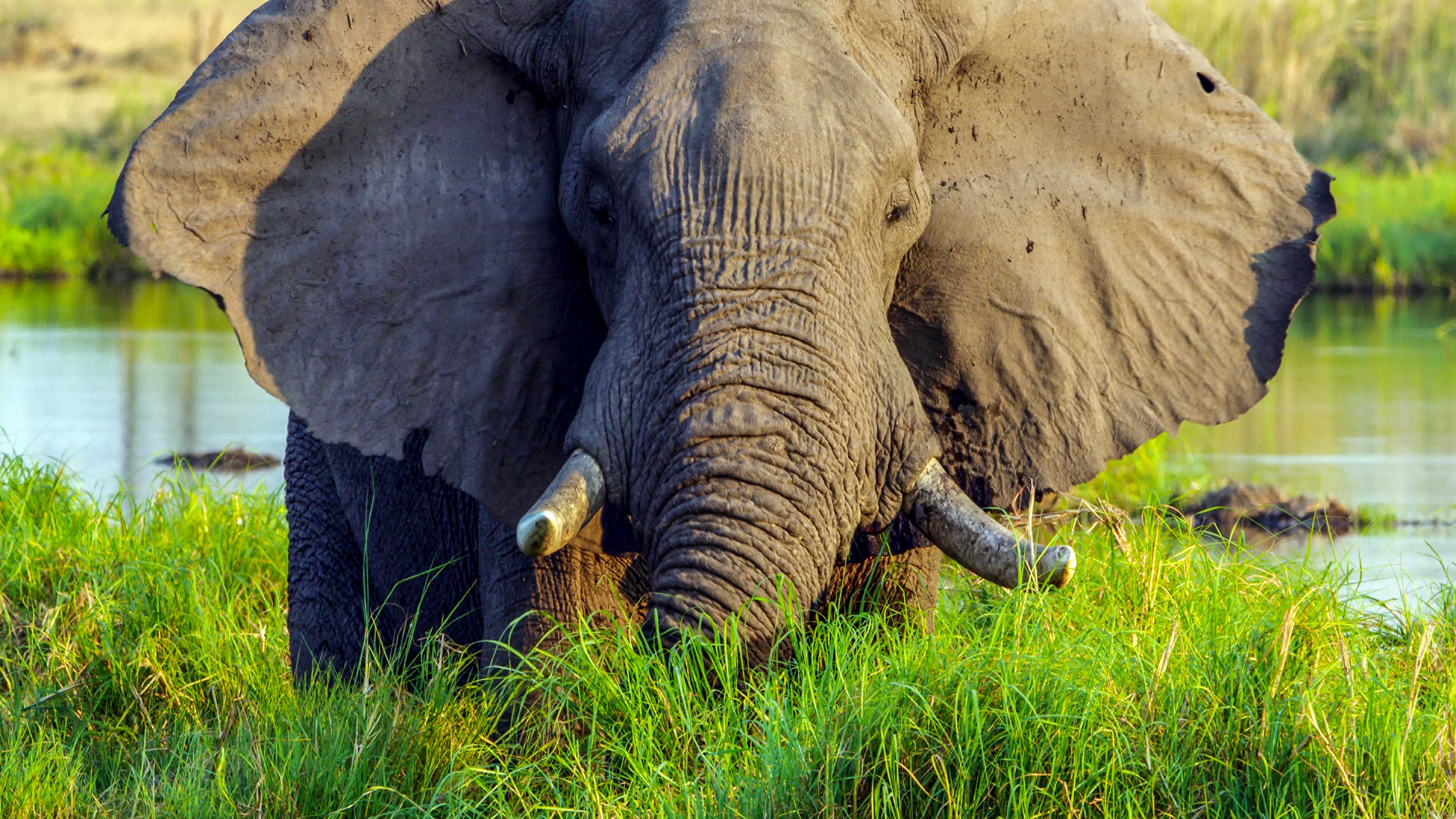
Rivers of Titans: Where Giants Roam and Danger Lurks.
Africa is a land of giants. Its powerful rivers sculpt the earth and form impressive valleys and waterways that are home to many imposing and powerful inhabitants.
Africa is a land of giants. Its powerful rivers sculpt the earth and form impressive valleys and waterways that are home to many imposing and powerful inhabitants. These are the rivers where massive elephants and hippos live, feed, and drink, and where ancient crocodiles hunt and breed. They share the rivers with porcupines, the martial eagle and the leopard. Let's delve into these magnificent rivers and the incredible wildlife that thrives along their banks.
The Limpopo River stretches across Botswana, Zimbabwe, and Mozambique, creating a rich habitat for diverse wildlife. This river is synonymous with the presence of elephants, known for their incredible size and intelligence. These gentle giants are often seen making their way to the river to drink and bathe, a sight that underscores their vital role in the ecosystem. Alongside elephants, the Limpopo River is home to the African python, the largest snake on the African continent. This formidable predator can grow up to six meters in length and preys on various animals, using a stealth attack from deep beneath the water to surprise its prey. Leopards, known for their stealth and strength, also roam the riverbanks, their spotted coats blending seamlessly with the dappled sunlight filtering through the trees.
The Sand River, located in South Africa, is another vital waterway where the presence of elephants is a common sight. These majestic creatures are often seen in large herds, their social bonds and complex communication systems on full display. The buffalo, with their imposing horns and sturdy build, also frequent the Sand river. This river is also home to the largest raptor in Africa, the martial eagle. This powerful bird of prey is a symbol of the untamed wilderness that characterizes this river.
The Hoanib River in Namibia's Namib Desert is an extraordinary sight, a ribbon of life cutting through the arid landscape. Here, desert elephants, adapted to the harsh conditions, roam the riverbanks. These elephants have evolved to survive with less water, traveling vast distances between the sparse watering holes. Their presence is a testament to nature's resilience and adaptability. Giraffes, with their long necks and legs, are also common along the Hoanib River. These gentle giants feed on the acacia trees that line the river, their unique physiology allowing them to reach the high branches. The sight of giraffes against the stark desert backdrop is one of the most iconic images of African wildlife.
Tanzania's Rufiji River is a vital lifeline for a variety of species, including elephants, porcupines, hippos, and giraffes. Porcupines, the largest rodents in Africa, are also residents of this riverine environment, their quills providing a formidable defense against predators. Hippos, with their enormous size and powerful jaws, dominate the river itself. These semi-aquatic mammals spend much of their time submerged, emerging at night to graze on the surrounding vegetation.
The Pongola River in South Africa runs through the Ndumo Game Reserve, a sanctuary for an incredible variety of wildlife. Crocodiles, with their ancient lineage and formidable jaws, are a common sight along the riverbanks. These apex predators play a crucial role in maintaining the ecological balance, preying on fish and other aquatic animals. Pods of hippos also inhabit the Pongola River, their social interactions and territorial disputes providing a fascinating glimpse into their behavior. The goliath heron, the largest heron in the world, is often seen wading through the shallows in search of fish. Its impressive size and striking appearance make it a standout resident of this diverse ecosystem.
The Victorian Nile, regarded as the longest river in Africa, is a river of immense significance. Monitor lizards, with their muscular bodies and sharp claws, also inhabit the riverbanks. These opportunistic feeders can be seen basking in the sun or foraging for food. The river is also home to hippos, whose calves struggle against the strong currents of the Murchison falls. This constant battle for survival underscores the harsh realities of life in the wild.
Gabon’s Ogooue River winds through dense tropical forests, providing a lifeline for forest elephants and buffalo. Forest elephants, smaller and more elusive than their savannah counterparts, thrive in this lush environment. These elephants play a crucial role in maintaining the health of the forest, dispersing seeds and creating clearings that promote new growth. The river is also home to the dwarf crocodile and the snouted crocodile, both of which are well adapted to the forested environment.
In conclusion, Africa's rivers are not just waterways; they are lifelines for some of the continent's most iconic and impressive wildlife. Each river, with its unique ecosystem, supports a diverse array of giants, from elephants and hippos to crocodiles and martial eagles. These rivers of giants are a testament to the richness of Africa's natural heritage and the incredible adaptations of its wildlife.
To watch this film, click here.
View more wildlife videos!